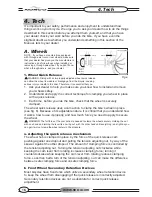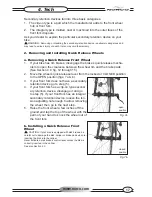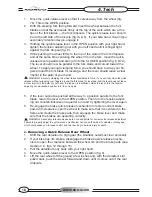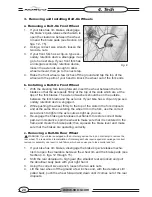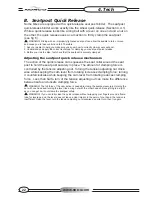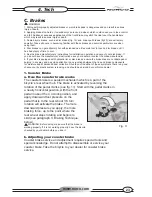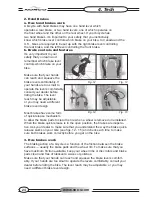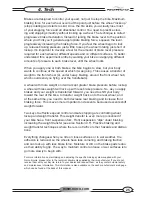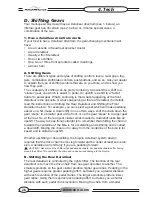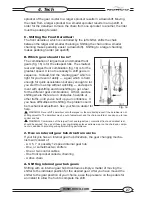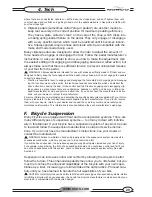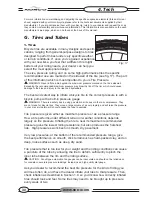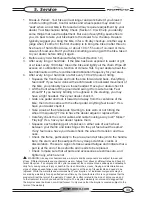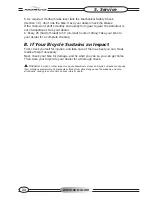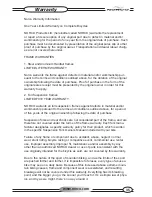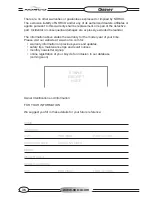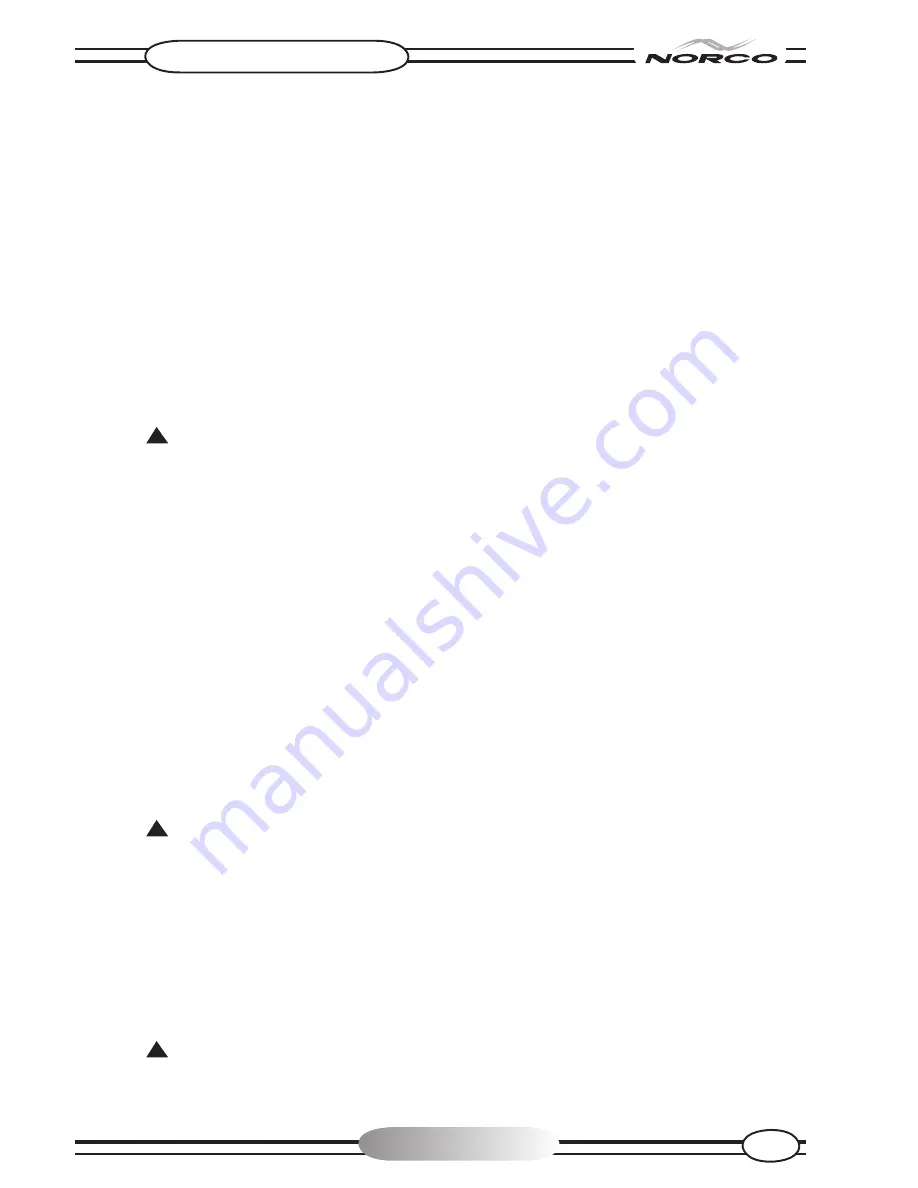
www.norco.com
29
where there are no obstacles, hazards or traffic. Keep the straps loose, and don’t tighten them until
your technique and confidence in getting in and out of the pedals warrants it. Never ride in traffic with
your toe straps tight.
4. Clipless pedals (sometimes called “step-in pedals”) are another means to
keep feet securely in the correct position for maximum pedaling efficiency.
They have a plate, called a “cleat”, on the sole of the shoe, which clicks into
a mating spring-loaded fixture on the pedal. They only engage or disengage
with a very specific motion which must be practiced until it becomes instinc-
tive. Clipless pedals require shoes and cleats which are compatible with the
make and model pedal being used.
Many clipless pedals are designed to allow the rider to adjust the amount of
force needed to engage or disengage the foot. Follow the pedal manufacturer’s
instructions, or ask your dealer to show you how to make this adjustment. Use
the easiest setting until engaging and disengaging becomes a reflex action, but
always make sure that there is sufficient tension to prevent unintended release
of your foot from the pedal.
WARNING: Clipless pedals are intended for use with shoes specifically made to fit them and are
designed to firmly keep the foot engaged with the pedal. Using shoes which do not engage the pedals
correctly is dangerous.
• Practice is required to learn to engage and disengage the foot safely. Until engaging and disengag-
ing the foot becomes a reflex action, the technique requires concentration which can distract the
rider’s attention, causing the rider to lose control and fall. Practice engaging and disengaging clip-
less pedals in a place where there are no obstacles, hazards or traffic; and be sure to follow the
pedal manufacturer’s setup and service instructions. If you do not have the manufacturer’s instruc-
tions, see your dealer or contact the manufacturer.
For more information on maintaining and adjusting the specific pedal system supplied with your Norco
bicycle, please refer to the technical documents supplied by their manufacturer. If you did not receive
them with your bicycle, return to your dealer and request them, as they contain crucial safety and
maintenance information. This information is also available on the each manufacturer’s web page.
F. Bicycle Suspension
Many bicycles are equipped with front and rear suspension systems. There are
many different types of suspension systems — too many to deal with individu-
ally in this Manual. If your bicycle has a suspension system of any kind, be sure
to read and follow the suspension manufacturer’s setup and service instruc-
tions. If you do not have the manufacturer’s instructions, see your dealer or
contact the manufacturer.
WARNING: Failure to maintain, check and properly adjust the suspension system may result in
suspension malfunction, which may cause you to lose control and fall.
If your bike has suspension, the increased speed you may develop also increases your risk of injury.
For example, when braking, the front of a suspended bike dips. You could lose control and fall if you
do not have experience with this system. Learn to handle your suspension system safely. See also
Section 4.C.
Suspension can increase control and comfort by allowing the wheels to better
follow the terrain. This enhanced capability may allow you to ride faster; but you
must not confuse the enhanced capabilities of the bicycle with your own capa-
bilities as a rider. Increasing your skill will take time and practice. Proceed care-
fully until you have learned to handle the full capabilities of your bike.
CAUTION: Not all bicycles can be safely retrofitted with some types of suspension systems. Before
retrofitting a bicycle with any suspension, check with the bicycle’s manufacturer to make sure what you
want to do is compatible with the bicycle’s design.
4. Tech
Summary of Contents for multi-speed bicycles
Page 1: ...for multi speed bicycles 7th Edition www norco com ...
Page 2: ......


